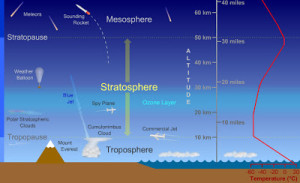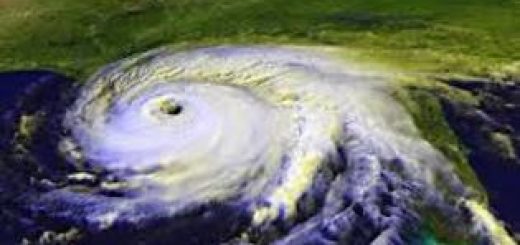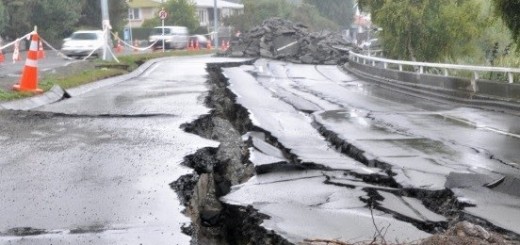Characteristics and importance of the stratosphere layer
The stratosphere layer
The stratosphere layer is the second layer of the atmospheric envelope, It is called the ozonic atmospheric envelope, The atmospheric pressure in the stratosphere layer decreases as we go up until it becomes 1 mb at its top ( 0.001 of the normal atmospheric pressure at the sea level).
The stratosphere layer extends from the tropopause (at a height of 13 km above the sea level) to the stratopause (at a height of 50 km above the sea level), The thickness of the stratosphere is 37 kilometers.
The temperature in the stratosphere layer increases gradually from (- 60° Celsius), at the lower part until it reaches (0° Celsius) at the top of the layer.
The temperature increases gradually due to the absorption of the ultraviolet rays that emitted from the Sun by the ozone layer which is present in the upper part of the stratosphere layer.
The stratosphere layer contains most of the ozone gas which found in the atmospheric envelope at the height of 20 to 40 km above sea level, So, The stratosphere layer is called the ozonic atmospheric envelope.
The lower part of the stratosphere layer does not contain clouds or weather disturbances, and the air movement is horizontally, So, the pilots prefer to fly their planes in the stratosphere layer.
So, the stratosphere layer is important for man’s life as it contains the ozone layer which absorbs the harmful ultraviolet radiations which emitted from the Sun, and also it is convenient for flying of the planes.
The stratosphere layer is stratified in temperature, with warmer layers higher and cooler layers closer to the Earth, this increase in temperature with altitude is due to the absorption of the Sun’s ultraviolet radiation by the ozone layer.
The stratospheric temperatures vary within the stratosphere as the seasons change, reaching low temperatures in the polar night (winter), Winds in the stratosphere can far exceed those in the troposphere.
The stratosphere layer is a region of intense interactions between the radiative, dynamic, and chemical processes, in which the horizontal mixing of gaseous components proceeds much more rapidly than does the vertical mixing.
You can download Science online application on google play from this link: Science online Apps on Google play
Atmospheric layers & pressure, Troposphere, Stratosphere, Mesosphere & Thermosphere
The characteristics and the importance of the mesosphere layer
The characteristics and the importance of the thermosphere layer
The characteristics and the importance of the troposphere layer





This is very helpful, thank you
You are welcome
Heh this was useful for my home work
Thank you
you are welcome
Much needed.
Thank you
You are welcome